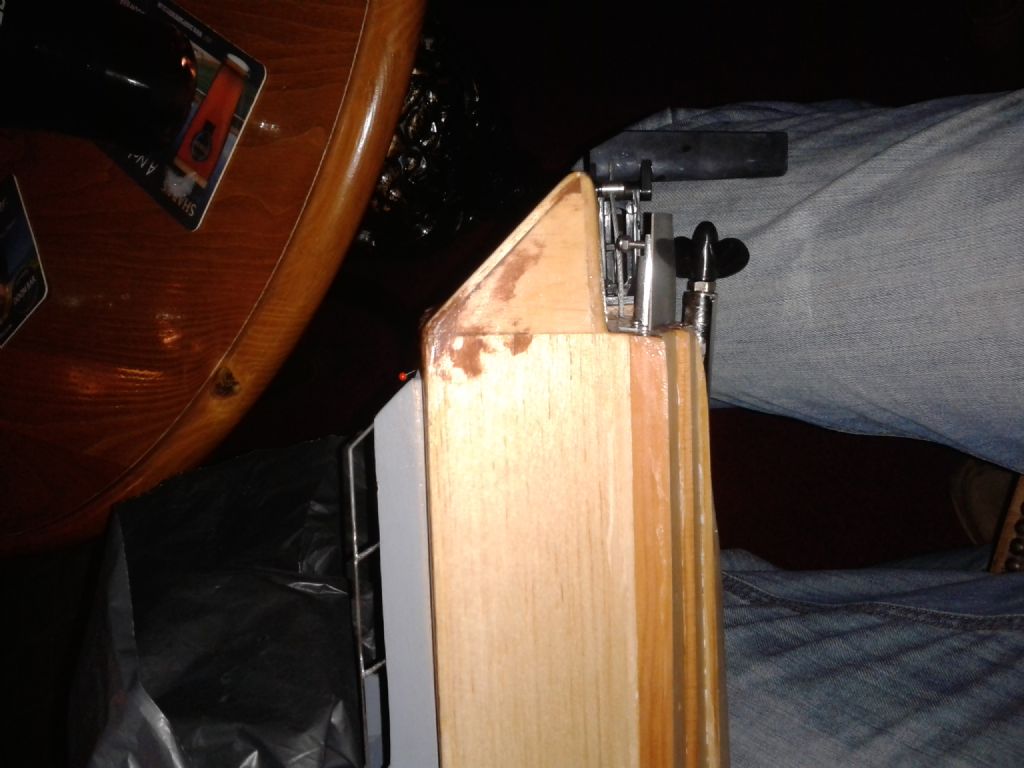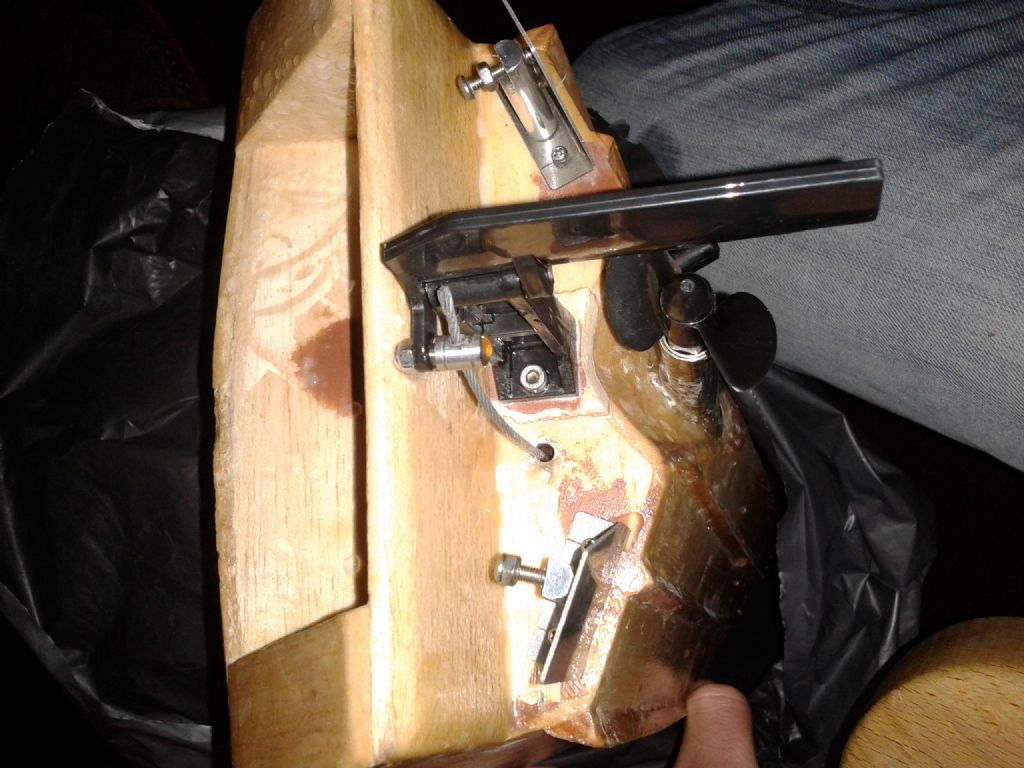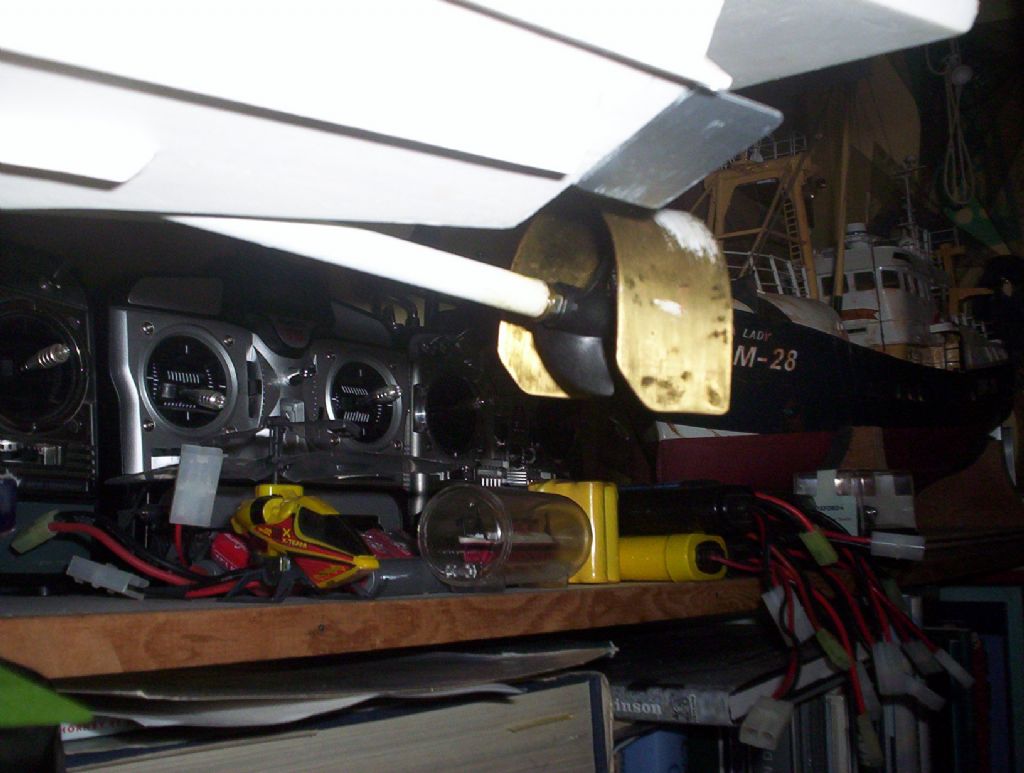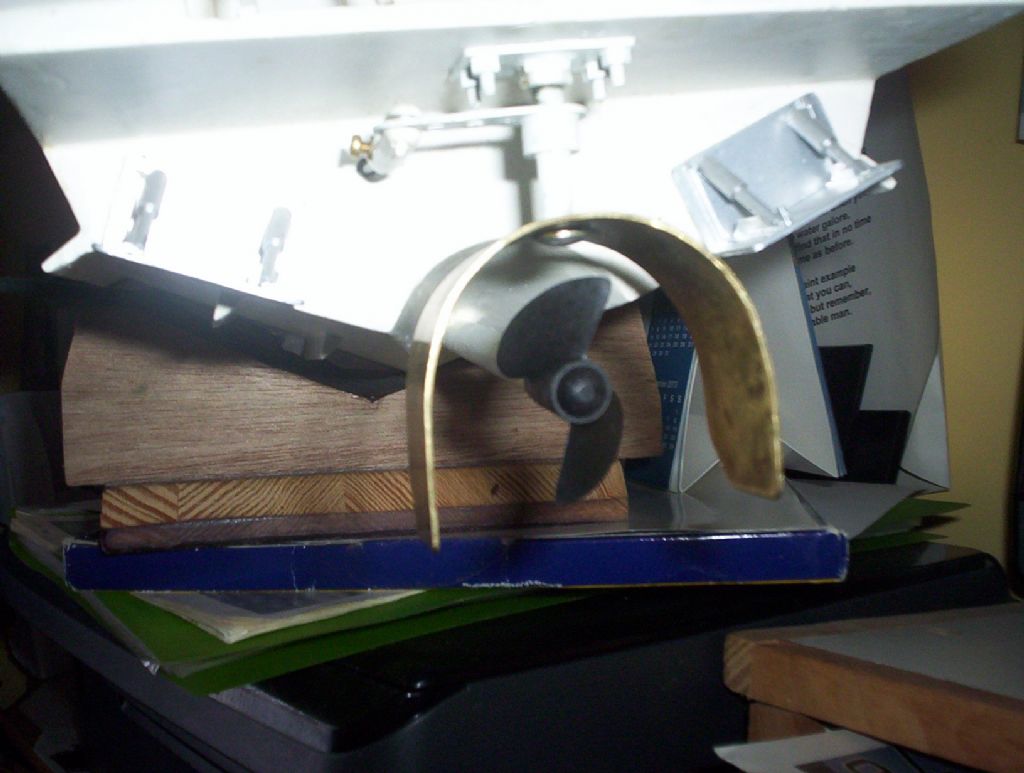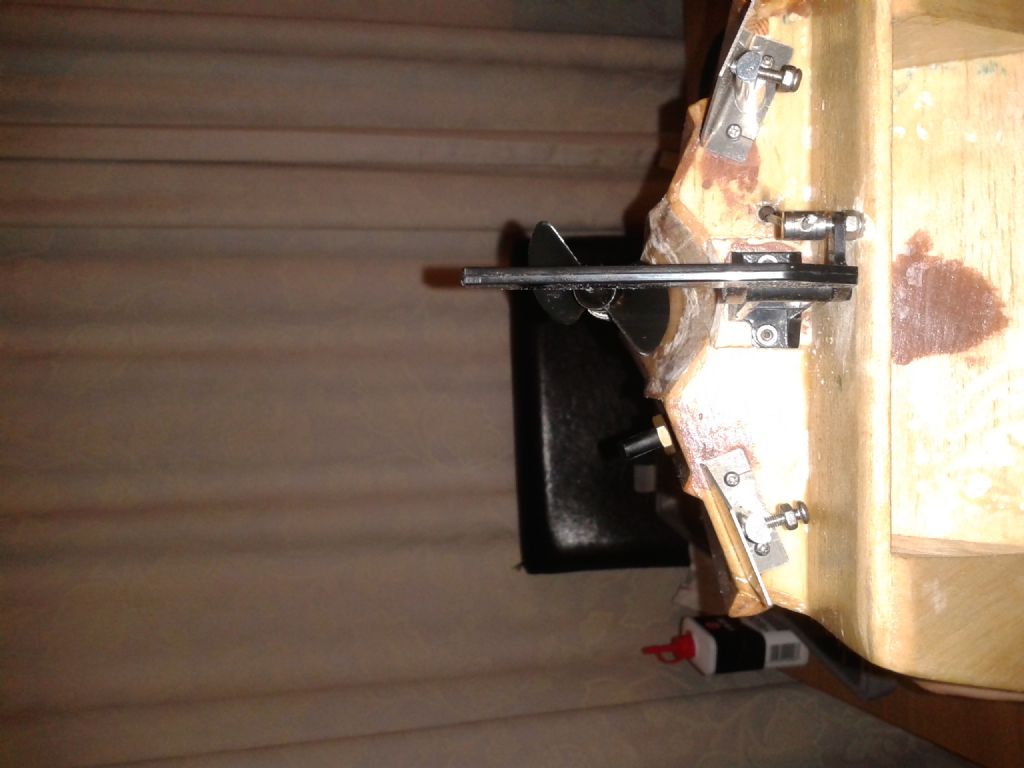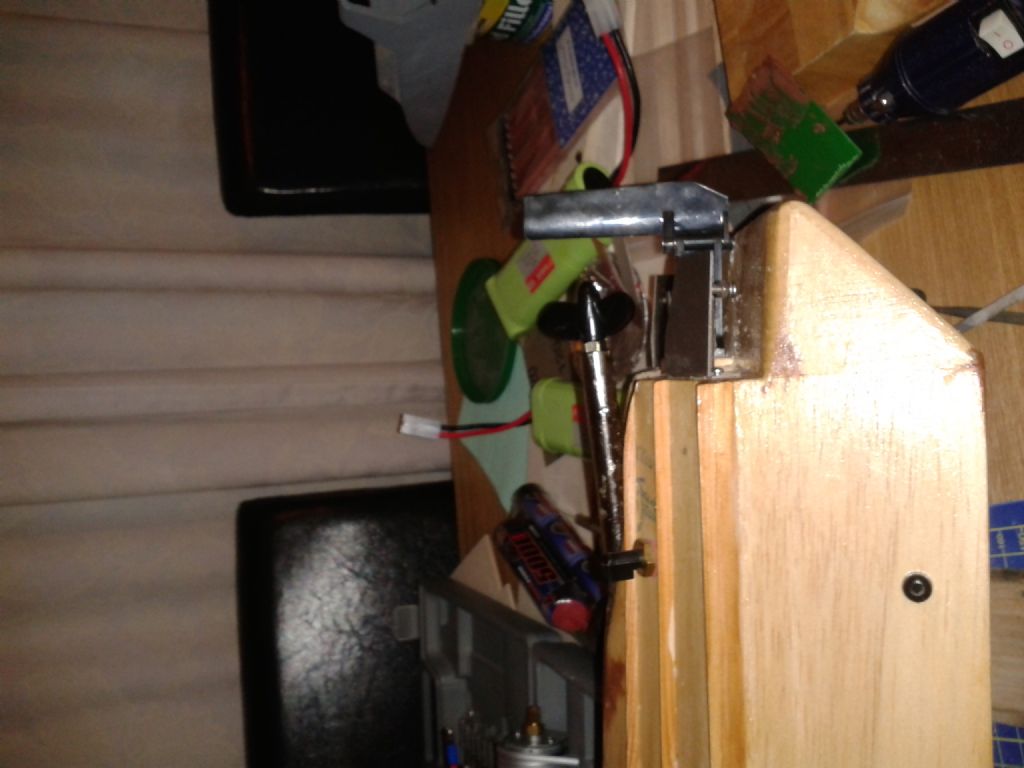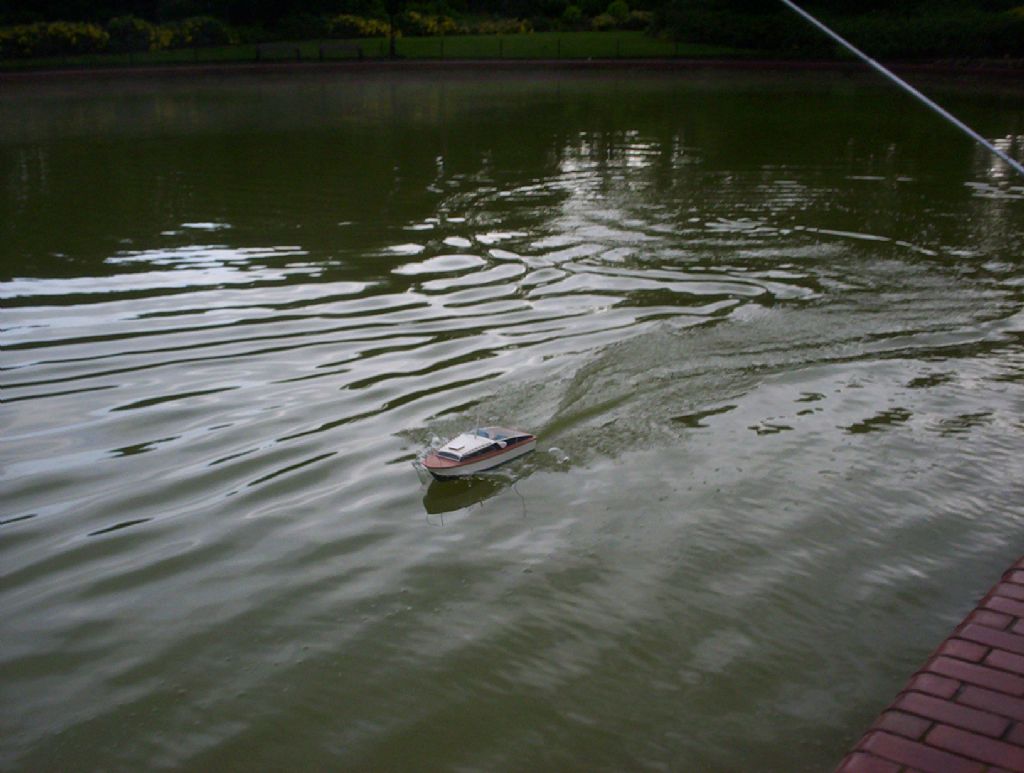
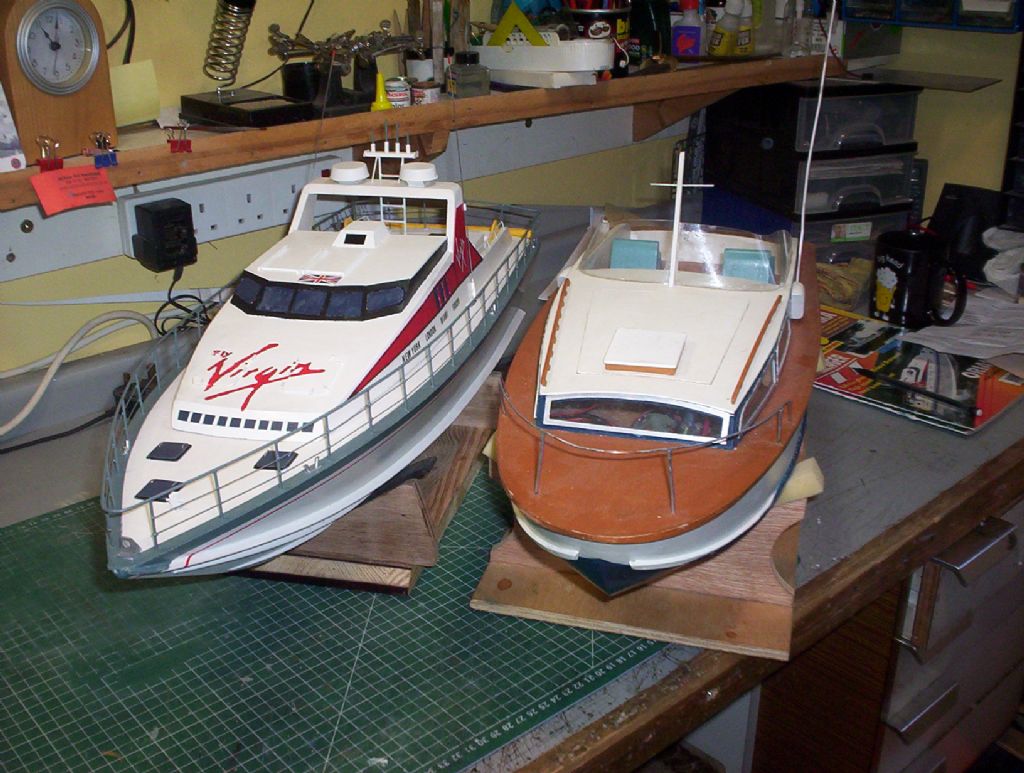
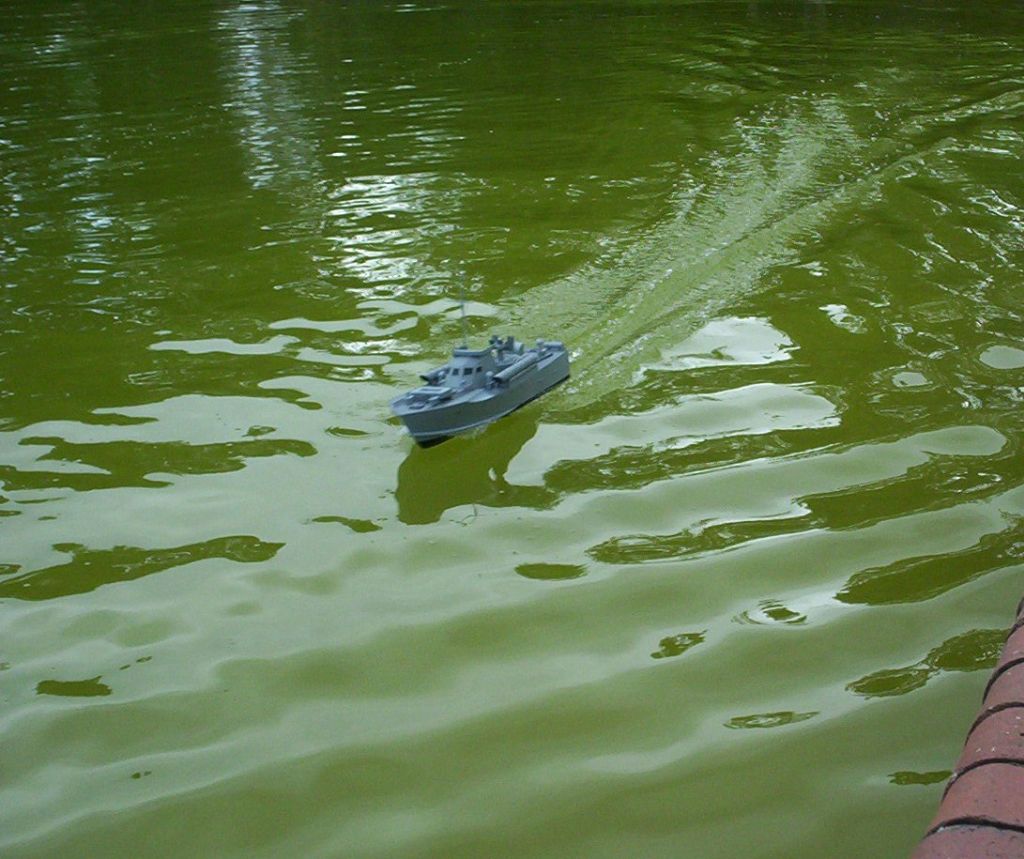 hi ya there
hi ya there
had time to have a bit think about the boat's performance in both models and I think part of the problem is the actual hull design. The original/lifesized vessel is an offshore power boat, specifically designed to go in straight lines in rough weather and therefore a very deep v in the hull. Therefore, it doesnt take a turn in tight circles easily – all deep v's tend to fall off the plane because of the increased wetted area on the side when turning.
I built a model of the Surfury with an IC engine and it suffered the same problems, brilliant in a straight line come to corner,….. and she would come off the plane.
Also, if you look at the Virgin Atlantic Challenger's propshaft design; how it stick out from the back of the boat; I dont think this would help either because of the tunnel that you had to create in the back of the hull to accommodate the propshaft.
The last, which we definitely think is the problem, is the U shaped rudder – its acting like a nozzle – but not a very efficient one. Replacing this with a single rudder may help the problem – and it would be interesting to see if you see any great improvement. But, I do have my doubts.
I have built several models – semi scale – one of Glyn Guests MTB – and the other one of Dave Milbourn's Fairy Swordsman and they have moderate V on the bottoms and they outperform the Atlantic Challenger any day in overall performance in turning and in a straight line. They have very similar motors and props on them.
Also they run on the same voltages.
food for thought….aye
john
Edited By bluebird on 11/10/2013 10:36:58
Edited By bluebird on 11/10/2013 10:37:23
Edited By bluebird on 11/10/2013 10:37:51






